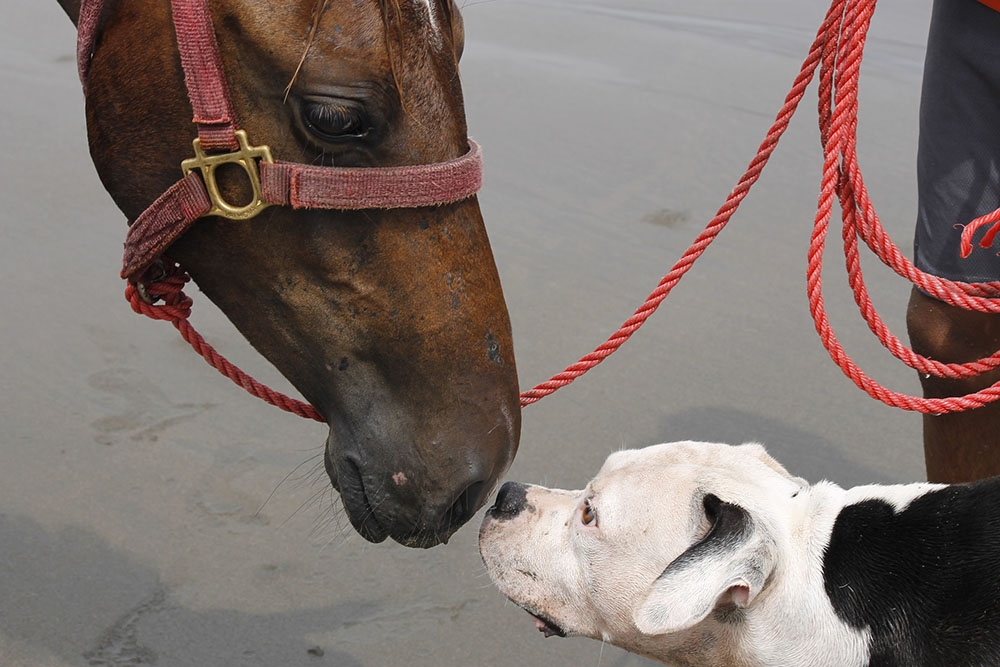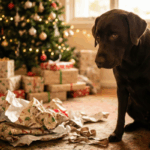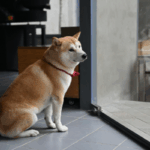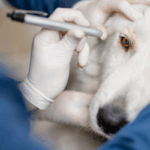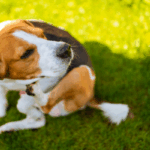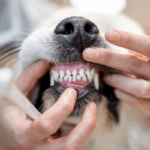This year we’ve seen multiple cases of injuries to puppies relating to interactions with horses. This includes puppies being stood on by horses and even getting scared and running into electric fences. Given the sheer size and weight of a horse, choosing to take your puppy around horses can be an extremely dangerous situation if not handled correctly.
In general, off lead puppies and horses do not mix. If you wish to have your puppy around horses then the ideal time to introduce the puppy to a horse is during the critical socialisation period of 10-16 weeks of age. Obviously at this age we cannot expect a puppy to be fully trained so having pup on a lead to allow more control of the situation is recommended. There are steps to take to ensure neither animal becomes afraid or overwhelmed, minimising the risk of injury.
Prior to the Meeting:
Having an obedient dog will allow you to have more control of the situation when you do introduce a puppy to a horse. It is extremely important to continually work on obedience training so that your pup reliably knows how to sit, stay and recall/come back to you. You may also eventually want to teach your puppy boundaries and ‘no-go’ areas in and around the stables/paddocks, but this comes with time. As with all puppy training we need to make the lessons achievable and positive. It is important to remember that puppies are just babies and we can’t expect too much of them.
Researching dog body language and signs of fear is also a fantastic idea, so you can recognise the often subtle hints that your pup may not be feeling totally comfortable (for example eyes wide, pacing, licking at lips). Speak with one of our vets or nurses who can assist you with how to read your pups body language.
It can be useful to also get your pup used to the smell of a horse by bringing home their halter or saddle blanket for example.
Ground Rules:
– Keep your puppy on a lead so that you can control the situation and know exactly where they are at all times
– Do not allow a dog to free run around a horse property
– Do not leave a puppy unattended with a horse
– Do not allow a puppy to wander around the legs of your horse. While you may trust your horse the pup may then try this with another horse who is not so cooperative.
The Introduction
The key to a successful introduction is to take it slowly! You do not want to rush up to either animal or force them to be near something that makes them scared or uncomfortable. If either animal gets spooked, it can lead to life-long fears, so taking your time now will set both animals up for success for the future. It may take months for both animals to be comfortable around each other, so do not rush the encounter.
Initially, begin by walking your dog on lead in the vicinity of the horse, so puppy can see the horse and get used to such a large animal without being thrust up next to them. Once your puppy can walk near horses without barking or showing any signs of fear or aggression, you can slowly decrease the distance between puppy and the horse. Once again, do not expect this to all happen on the first day.
When you feel your puppy is ready you can allow the horse and pup to sniff at each other through the safety of a fence or stable. Ideally start with a horse that has been around dogs previously and is not likely to react to a dog that may bark or behave nervously.
Having a second person present, who is experienced with horses, focus on the horse can allow you to focus your attention on your puppy. Only ever approach slowly and when the horse is relaxed. If your puppy is too overexcited, it may also be best to wait until puppy has calmed down before making the introduction.
It is also important not just with horses but when introducing anything new to your puppy, that the experience remains positive. Give puppy lots of treats and pats to make sure your puppy associates the horse with happy and positive experiences. If your puppy displays any negative behaviour, ignore it and give them a command they reliably know how to do, such as ‘sit’, and reward them for that. It may be that you have moved too quickly and your puppy is not ready for face-to-face introduction. Take them a short distance back and again wait until they are comfortable being in the same area as the horse before introducing them at a later time.
Dogs mixing with horses can be extremely dangerous, so taking the time to ensure both animals remain comfortable in each other’s presence is extremely important. If you have any questions, or would like further information on dog body language and signs of fear, please feel free to contact the clinic on 5995 1451.

